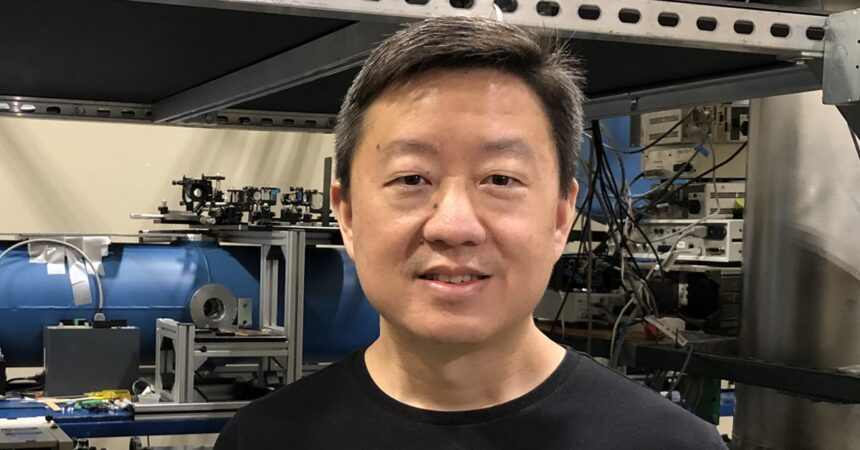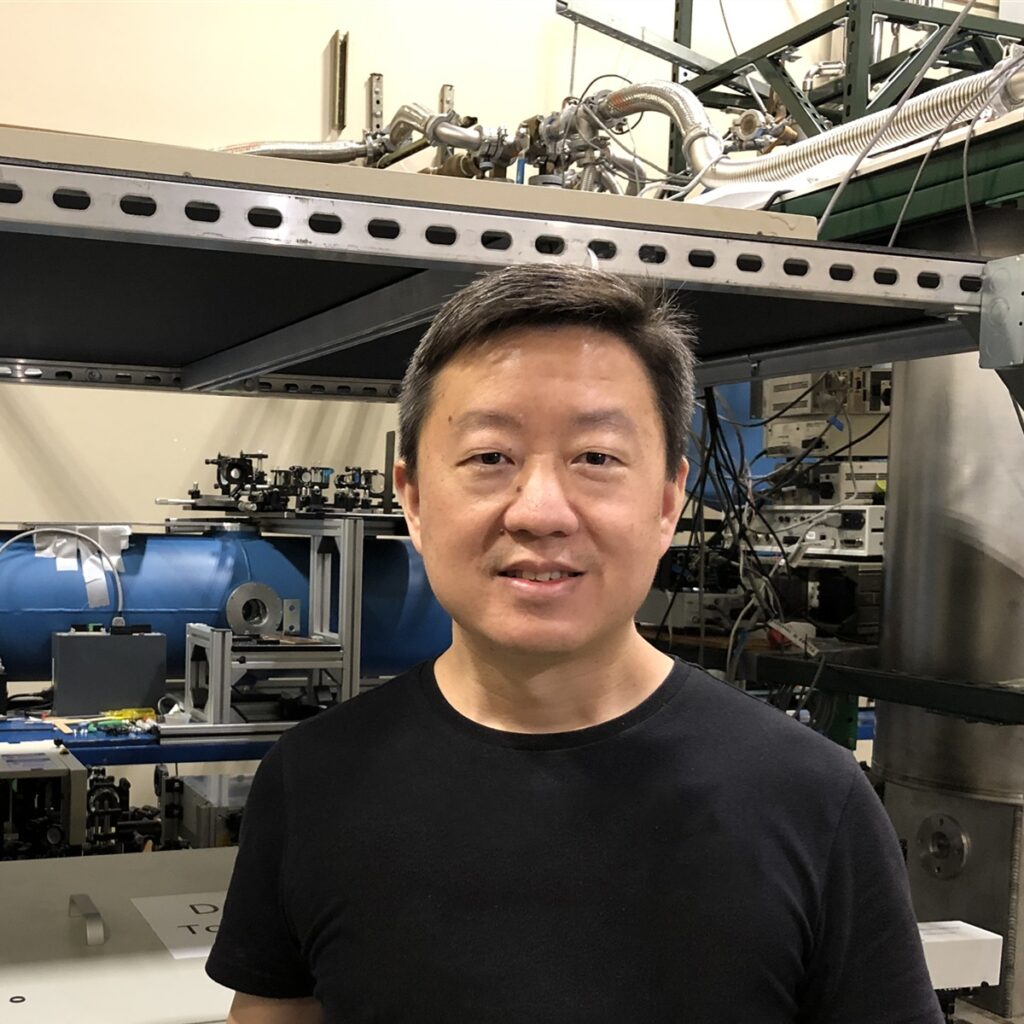
FAMU-FSU professor will study superfluid helium with $1.25M grant from Gordon and Better Moore Foundation

Photo submitted
By Bill Wellock
FSU Office of University Communications
When the temperature of matter approaches absolute zero, a different type of physics takes over. Instead of classical physics — the physics you learned about in high school — quantum physics governs its behavior.
For example, helium is typically a gas, but when an isotope of helium is cooled to very low temperatures, it becomes a quantum liquid called superfluid helium. Quantum liquids behave in unusual ways, appearing to climb up a gradient or forming thin vortex tubes around which the superfluid flows without friction.
FAMU-FSU associate professor of mechanical engineering Wei Guo studies superfluid helium. The Gordon and Betty Moore Foundation awarded Guo a $1.25 million grant over five years through its Experimental Physics Investigators Initiative for research into the properties of this quantum fluid. He is the first investigator from FSU to receive a grant from the foundation.
“This is an exciting opportunity to develop new ways to study this fascinating form of matter,” Guo said. “The research my team is planning will lead to new insights into fundamental quantum physics questions and will also produce data of tremendous practical importance in turbulence model testing.”
Guo is one of 16 researchers from around the country to receive grants from the foundation for experimental physics research.
“The breadth and scientific audacity of experiments proposed by these individuals is stunning and inspiring,” said Theodore Hodapp, program director in the Experimental Physics Investigators Initiative. “Stunning as well is the creativity and capabilities of these scientists.”
The funding will support two projects. For the first project, Guo will lead the development of a facility capable of levitating a drop of helium and then removing the vapor from the drop, which lowers its temperature to almost absolute zero, thus transforming it into a superfluid.
This deep cooling is normally achieved with an expensive piece of equipment called a dilution refrigerator. But those machines typically require containers to hold the liquid helium, which confines the motion of the liquid and can also pin the vortex tubes to the container walls. These issues can be avoided using a levitated drop.
By rotating the drop or cooling it very rapidly, the researchers can create vortexes within the drop. Adding tracer particles will allow them to follow the formation and movement of vortexes, giving them a better understanding of the properties of turbulent motion in superfluid helium.
For the second project, Guo’s team will build a tunnel to observe turbulence within liquid helium. Just as scientists and engineers use wind tunnels to observe airflow over models of airplanes or submarines, Guo’s team can use its tunnel to observe the flow of liquid helium over different objects. Because liquid helium has a viscosity about 1,000 times lower than air’s viscosity, the tunnel can produce highly turbulent flows that mimic the real flows produced in a natural environment by large-scale airplanes and submarines.
Another advantage is that superconducting magnets can be used to levitate the objects inside the tunnel without using any support structures. These support structures can generate unwanted flows that interfere with the natural flow around the objects, a rather notorious problem in conventional wind tunnels.
The team also plans to cool the helium within the tunnel to its superfluid phase and contrast the differences in turbulence that appear with liquid helium in its classical state and in its superfluid state.
The five years of funding gives the researchers the stability they need for success, Guo said.
“Both proposed research projects are high-risk/high-reward, interdisciplinary programs that involve considerable research and development efforts, which is risky and unfavorable for conventional three-year programs from other funding agencies,” he said. “The five-year Moore program is a nice solution that could allow this team to carry out the proposed work to develop state-of-the-art facilities and to advance the frontiers of quantum and classical turbulence research field.”
The Gordon and Betty Moore Foundation fosters path-breaking scientific discovery, environmental conservation, patient care improvements and preservation of the special character of the San Francisco Bay Area.







